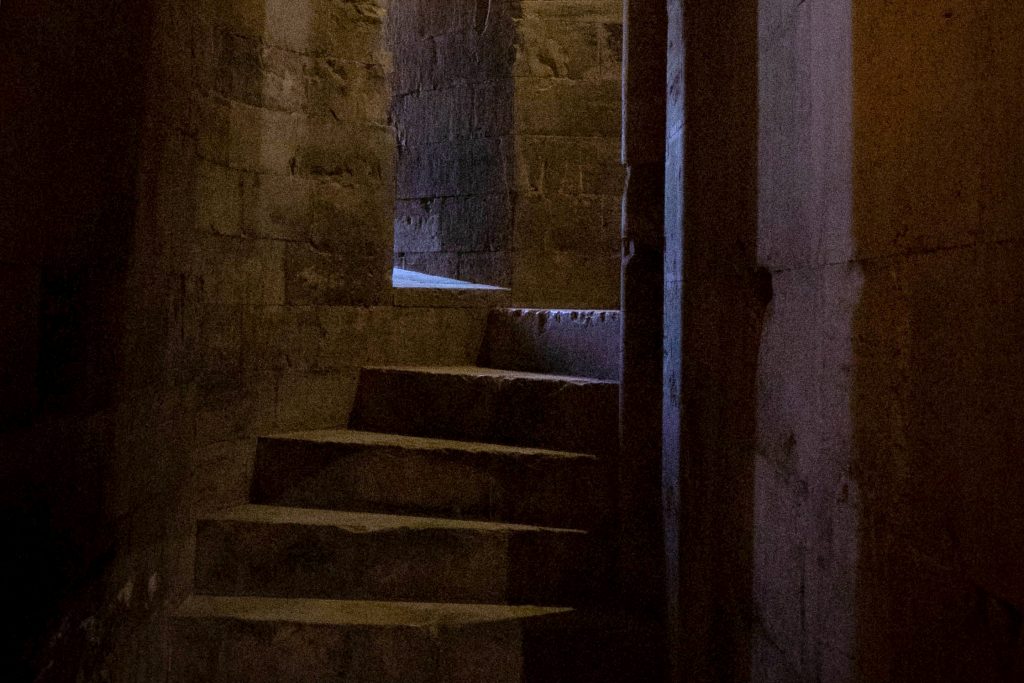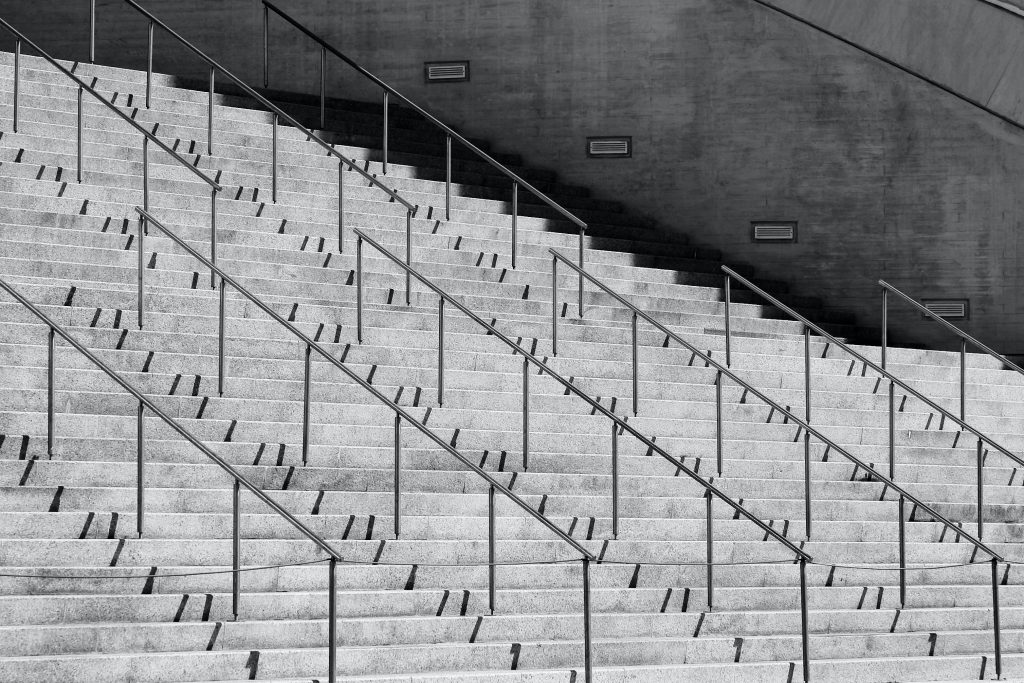Everything you ever wanted to know about stairs
We talk stairs day in, day out and we love what we do. To share a better understanding of our adoration for the humble staircase, we’ve shared some of our favourite flight-y facts below…
Who invented stairs?
Flights of stairs are as old as the hills, but who actually invented them? There is a poem penned by Oliver Herford that goes a way to immortalising the inventor of the staircase…
Here's to the man who invented stairs And taught our feet to soar! He was the first whoever burst Into a second floor. The world would be downstairs to-day Had he not found the key; So let his name go down to fame, Whatever it may be.Stairs – A Toast by Oliver Herford
The short answer is, we don’t actually know who to credit with the official ‘invention’ of the staircase, although we think Mother Nature is a pretty good guess. Millions of years before humans in their earliest form roamed the earth, nature had already fashioned herself amazing steps… you only have to think of the stunning Giant’s Causeway in Northern Ireland to see an example of an elaborate staircase in nature. Formed around 50 million years ago, the area contains about 40,000 interlocking basalt columns which defy reason or logic.

Who regulates stairs?
In times gone by, stairs were constructed using lain logs, as well as flattened stones and similar materials to build step-able height. With each era in design too, there has been a reworking of the staircase. From the Renaissance style of elegance and complexity to the concrete cladded brutalism where functionality and simplicity is key, there are many ways to ‘do’ a staircase. As you might expect, stair design is heavily regulated due to statistics that reveal a fall on stairs happening every 90 seconds, amongst other things. This is done in the form of Document K: government guidance on building regulations, with a whole section on stairs, ladders and ramps. These guidelines cover everything from the space between spindles to the width of the flight and headroom clearance. Some of these apply to domestic flights and others to commercial flights, so do let us know if you need any assistance in getting your staircase right. We have a downloadable version of Document K available on our website.

A defence mechanism hidden in plain sight
Have you ever noticed that in castles, churches and other towers, the spiral staircases almost always travel clockwise? Built during the medieval period, the idea was that the narrow, clockwise winding stairway would be a disadvantage to right-handed attacking swordsmen, as they would be forced to use their stronger right hand to support themselves ascending the steps, and their weaker left hand would be brandishing their weapon. This obviously had a strategic advantage to the defender. Some staircases were purposely designed to cause enemies to trip and fall further by having steps that were uneven… stopping the fight before it had even started!

Reaching new heights
In the Guinness Book of World Records, there are many staircase-related records, including the longest staircase (found on the face of Mt. Neisen in Switzerland, measuring 3.4km long with a staggering 11,674 steps!), the greatest vertical height climbed in 12 hours (achieved by tower running champion Christian Riedl in 2014 when he climbed 13,145.65m over 71 ascents) and less obviously, the most consecutive stairs climbed on the head (held by Li Longlong who traversed a total of 36 steps using only the force of motion and his head!). For such a humble piece of infrastructure, those are some impressive achievements.

Staircase Olympics?
You may not believe it, but competitive stair climbing – also known as tower running or vertical running – is a sport that is surprisingly growing in popularity. The Empire State Building Run Up, ‘La Verticale de la Tour Eiffel’ and Niesen Stair Run are three of the globally most well-known vertical running races that are held annually, but there is a growing interest here in the UK too. Shelter’s Vertical Rush and NSPCC’s Gherkin Challenge are annual charity races held in London in order to fundraise, drawing quite the crowd. If pounding the 1,037 steps of the Gerkin seems a bit intense, you’ll be pleased to know that even traversing your flight at home is great exercise. Stair climbing is officially classed as ‘vigorous exercise’, it burns more calories per minute than jogging and is in fact kinder on your joints and muscles. Even heading southbound on the stairs is beneficial, burning less calories but working different joints and toning different muscles, even improving bone density. You can’t go wrong with that every time you pop up or down stairs!

Leftie or a rightie
When you order a SpaceSaver staircase, one of the first questions you will be asked is whether you want to start on your left foot or your right and the bottom tread will be on the corresponding side. This question tends to stump people, but actually you will typically use the same foot to begin the ascent of any staircase. Most of the time, this will be your ‘stronger foot’ – if you’re right-handed you might find this is also true of your feet. Or it may be the location of the flight dictates which foot takes the first step, for example if it is found around a corner or behind a door.

The next step
John Templer’s book, The Staircase, originally published in 1992 was the first theoretical, historical and scientific analysis of the stair, looking deeply into the art and science of stair design, the history of staircases and their hazards, amongst other things. If your appetite for more staircase shaped facts, figures and theories is not satisfied, Templer’s book will be the next place to go for further reading.
Keep it ‘going’
If you need any guidance with your own staircase design, please don’t hesitate to get in contact with our customer service team who can help with everything from regulation questions to troubleshooting tricky spaces and design woes.
We’re here for you every ‘step’ of the way!



